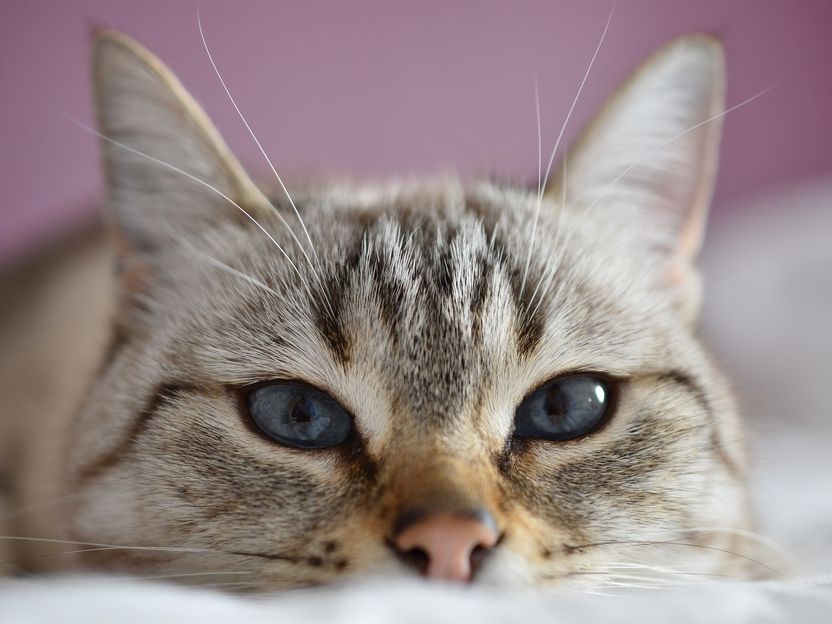Novel immunotherapy approach to treat cat allergy
High levels of adjuvant boost immune tolerance and mitigate allergy symptoms
Advertisement
Researchers from the Department of Infection and Immunity of the Luxembourg Institute of Health (LIH) proposed a novel therapeutic approach to treat severe cat allergy, based on the modulation of the immune system through the injection of the major cat allergen Fel d 1 in combination with high doses of CpG oligonucleotide, an adjuvant substance. This allergen-specific immunotherapy (AIT) was found to induce increased tolerance towards the allergen and revert the main hallmarks of cat allergy, thereby constituting a valuable option for use in clinical trials.

Symbolic image
pixabay.com
Cat allergy is a rapidly increasing phenomenon characterised by an hypersensitivity and excessive immune response to certain allergens associated with felines, particularly Fel d 1, a protein typically found in their saliva, skin and fur. Cat allergy manifestations can range from mild symptoms to the development of severe conditions such as rhinitis and asthma, with potentially fatal outcomes. Only AIT can ensure an effective and longer lasting treatment in the more advanced cases. AIT typically consists in the subcutaneous injection of gradually increasing quantities of the allergen in question, until a critical dose is reached that induces long-term immune tolerance. Nevertheless, there is still the need to improve cat AIT in terms of efficacy and safety. The researchers hypothesised that the most effective cat AIT could be achieved by optimising the response of the immune system to induce the production of antibodies against Fel d 1 while minimising inflammation, thereby boosting immune tolerance to this allergen.
“We sought to explore new means of increasing the anti-inflammatory activity of AIT with the known immunomodulatory adjuvant CpG, but at a higher safe dose than previously used for this type of therapy”, explains Dr Cathy Léonard, scientist within the Allergy and Clinical Immunology research group at the LIH Department of Infection and Immunity and co-corresponding first author of the publication.
The scientists therefore injected allergic mice with the Fel d 1 allergen in combination with a high dose of CpG adjuvant to study the effects of this AIT in mitigating cat allergy symptoms. They observed that, compared with allergic mice that had not received the treatment, AIT-treated allergic mice showed significantly reduced signs of airway inflammation and hyper-responsiveness, lower levels of pro-allergic molecules (known as cytokines) and of IgE antibodies commonly associated with allergic responses, and higher levels of IgA and IgG antibodies, which can have anti-inflammatory properties. The researchers also noticed that, already very soon after AITinjection, there was an increase in the abundance of immune cells involved in allergy regulation and tolerance, namely plasmacytoid dendritic cells (pDCs), Natural Killer cells (NKs), regulatory T cells (T-regs) and regulatory B cells (B-regs). These cells express higher levels of specific molecules and associated receptors, which allow them to suppress the allergen-specific immune response and act as a ‘brake’ on the immune system. Collectively, these findings show the strong anti-inflammatory and anti-allergic effect of AIT with a high and safe dose of CpG adjuvant.
“In essence, we propose a pre-clinical model of AIT for cat allergy, which mimics the conditions required for human AIT clinical trials and which is already optimised for future use in translational studies. Indeed, our study presents several novelties including the use of a ‘safe’ version of the Fel d 1 allergen, which is mandatory in the clinical setting to avoid collateral inflammatory responses. Moreover, we show for the first time that the use of the maximum dose of CpG tolerated in humans has the ability to modulate the allergic response when combined with Fel d 1, with very favourable safety profiles and through the well-established and medically-approved subcutaneous injection delivery mode. Based on our data, we believe that CpG deserves reconsideration as an effective AIT adjuvant in humans and that our work sets the bases for the development of novel successful immunotherapeutic treatments for allergies”, concludes Prof Markus Ollert, Director of the LIH Department of Infection and Immunity and senior lead author of the study.




















































